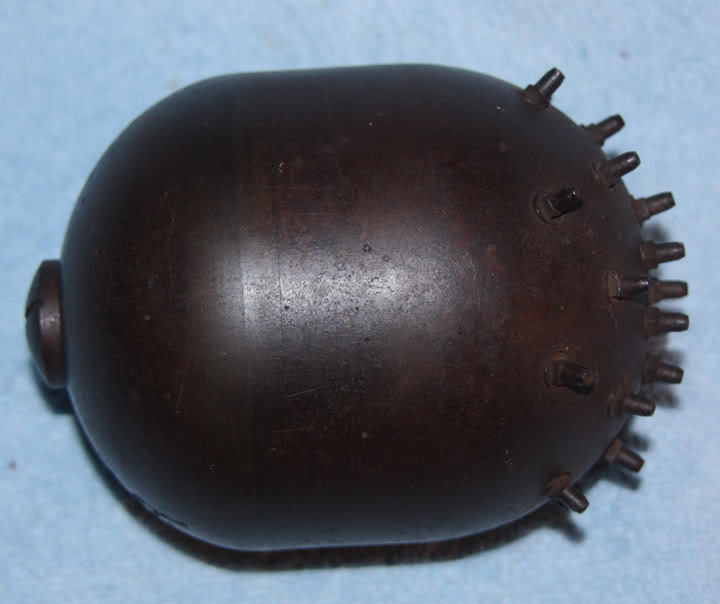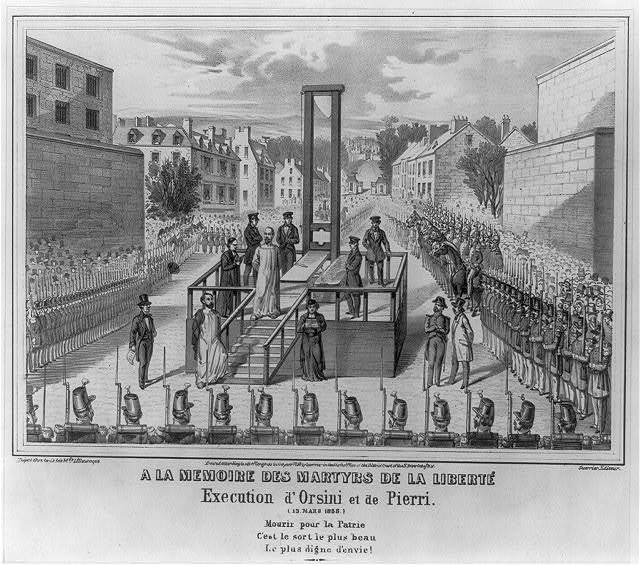In the early 1850s, in what is now Italy, the soon-to-be-country’s revolutionary nationalists hated in equal measure the Austrians for occupying much of the north and the Pope who was sustained by the Austrians, for retaining his distinctly worldly hold on the bit in the middle he claimed as The Papal States.
Garibaldi, Mazzini and the revolutionists had been scouring Europe searching for democratic nations as allies who agreed with them. Harbouring incendiary nationalist exiles and anarchists from every revolutionary cause from Ireland to Russia, Britain decided to stay out of that particular fight.
The Italians thought they had found a friend in the French when the ‘turkey that thinks he’s an eagle’ the German accented self-proclaimed Emperor, Napoleon III of France said he’d assist.
However, the bloodbath victories from the battles of Magenta and Solferino changed Napoleon’s mind about being a warrior king and he promptly deserted the Italian cause with a peace treaty that recovered for France the lands around Nice. Even before that, some of the hardliner Italians foresaw that Napoleon had been a problem not the solution to Italian unification since 1849.
One of them was a revolutionary since childhood. He was Felice Orsini. What does an out-there revolutionary do when confronted with a problem – then or now? He builds a bomb – or as they were called in the days before the term that sounds vaguely gynaecological, ‘IED’ was coined – an ‘infernal machine’. Yes they really did call them that.
As Marcelin Berthelot, a chemist who had done pioneering work on explosives, said in 1906 when he was interviewed by the Illustrated London News: “The revolutionaries are under a dangerous illusion: They imagine that by the use of explosives they will alter the organisation of society.”
This did not deter Count Orsini in his belief that a bomb would provoke revolution in France and assist Italy. However fatally misguided he was, his bravery for the cause was not at issue. After all, this was the man who had made his escape from an Austrian jail in 1854 by sawing through the bars of his cell in Mantua and descending 100 feet from the window to the ground with the traditional rope made of bedsheets. (Note to jailers, cut back on the laundry).
Now in 1857 Orsini was in Britain being feted by the Liberal intelligentsia, who, it is hoped, knew nothing of his side trips to Birmingham. In that great manufacturing city of Empire he took his revolutionary (in any sense you want) design for his bomb to a gunsmith named Joseph Taylor.
In one sense the bomb was revolutionary in that it was said to be the first portable device to use fulminate of mercury as its main charge. Its detonating mechanism was innovative too. The things Joseph made – and he made six of them – were fat hollow eggs of cast iron, thicker at the head end so that they would land upon one of the hedgehog of 25 percussion cap nipples at that end, each fitted with the standard percussion cap used in pistols. They were tested in England and they seemed to work, so Orsini and his co-conspirators smuggled them to France disguised as gas fittings.
Napoleon III and his wife, the Empress Eugenie (a devout Catholic who is said to have bent her husband’s will Pope-wards) were set to attend the theatre in rue Le Peletier in the ninth arrondissement to enjoy some grand opera, including the second act of Rossini’s William Tell. The date was January 14, 1858.
Helmuth Moltke’s wise words about battle plans not surviving the first encounter with the enemy were as true of a bomb attack as any army’s advance.
The attack did not go well. Minutes before the attempt one assassin, Giuseppe Pieri, was arrested with his two bombs wrapped in black silk, a six shot pistol and a knife. The other assassins had all rehearsed lying down in the street and counting the bangs of the bombs thrown by their colleagues to avoid shrapnel — but as Pieri was arrested there was uncertaintym and so not all the conspirators ever threw their bombs
The first bomb that landed extinguished all the gas lights along the street that had been so brightly lit in celebration, so you can imagine the pitch black confusion. Bombers and police alike had to navigate in the dark over dead and dismembered men, women and horses. After the initial silence screams of pain and panic rent the dark as the slippery sidewalk filled with blood. A second bomb exploded on the carriage roof and finally a third. Eight died at the scene and 142 were wounded with four of them dying later. The Emperor and his wife escaped though each with a scratch to the face from broken glass, and fragments of iron destroyed the emperor’s hat and made a hole in his cloak. With the sang froid of nobility, they proceeded to their box and watched the opera.
Orsini had been too near the first blast and was stunned and wounded. He escaped but was picked up the next day at his lodgings – still with two of the bombs in his possession.
The trial outcome was inevitable. It was death by the guillotine for Orsini and fellow bomb thrower Giuseppe Pieri for they had attempted ‘parricide’ upon the father of the nation. A third condemned man, Carlo de Rudio was woken on the morning of the execution to be told he had his death sentence commuted. Here’s an eyewitness account of the two men just before their execution.

Pieri went first and just as the blade fell, Orsini’s guards in a merciful and rehearsed action suddenly swivelled him around to avoid seeing what was about to happen to him. In four minutes from leaving the prison it was all over for them both.
England’s part in the debacle could be likened to Russia’s peripheral association with the Lee Harvey Oswald case. The diplomatic shrapnel resounded that Spring until war was a distinct possibility before Napoleon defused that bomb.
Speaking of bombs, it’s good to know too that by 1906, the French at least were using high technology means to mitigate the effect of the infernal engines, suspect devices and bombs of the sort that had nearly done for Napoleon III. Is it me or does this official collector look just a tad nervous?


2 comments
Comments are closed.